With the way Chef Priyanka Naik’s cookbook, The Modern Tiffin, is put together — brimming with color and accessible recipes — you’d be forgiven for thinking this was just the latest volume in a storied and long career as a cookbook author. It’s not. In fact, it’s Naik’s debut, a bold, effervescent reflection of the self-taught Dish It Healthy host’s two biggest passions: cooking and travel.
The Modern Tiffin offers practical guidance and plenty of insight into Chef Pri herself, as the upbeat rising food star guides us through 55 mouth-watering recipes that showcase the global vegan experience. Across eleven chapters, Chef Pri shares food from some of her favorite regions across Mexico, Australia, the United States, Thailand, and more. But the recipes are also often infused with her own unique, Indian-inspired twists — creating a fun fusion that doesn’t obsess over remaining loyal to traditional recipes.
The case against veganism has always been that it doesn’t feature enough umami — that unctuous, rich, savory “fifth taste” — but Chef Pri’s book and recipes make a mockery of that outdated notion. So naturally, we had to hit her up for some advice we could apply when cooking our own dishes. Check her tips, below.
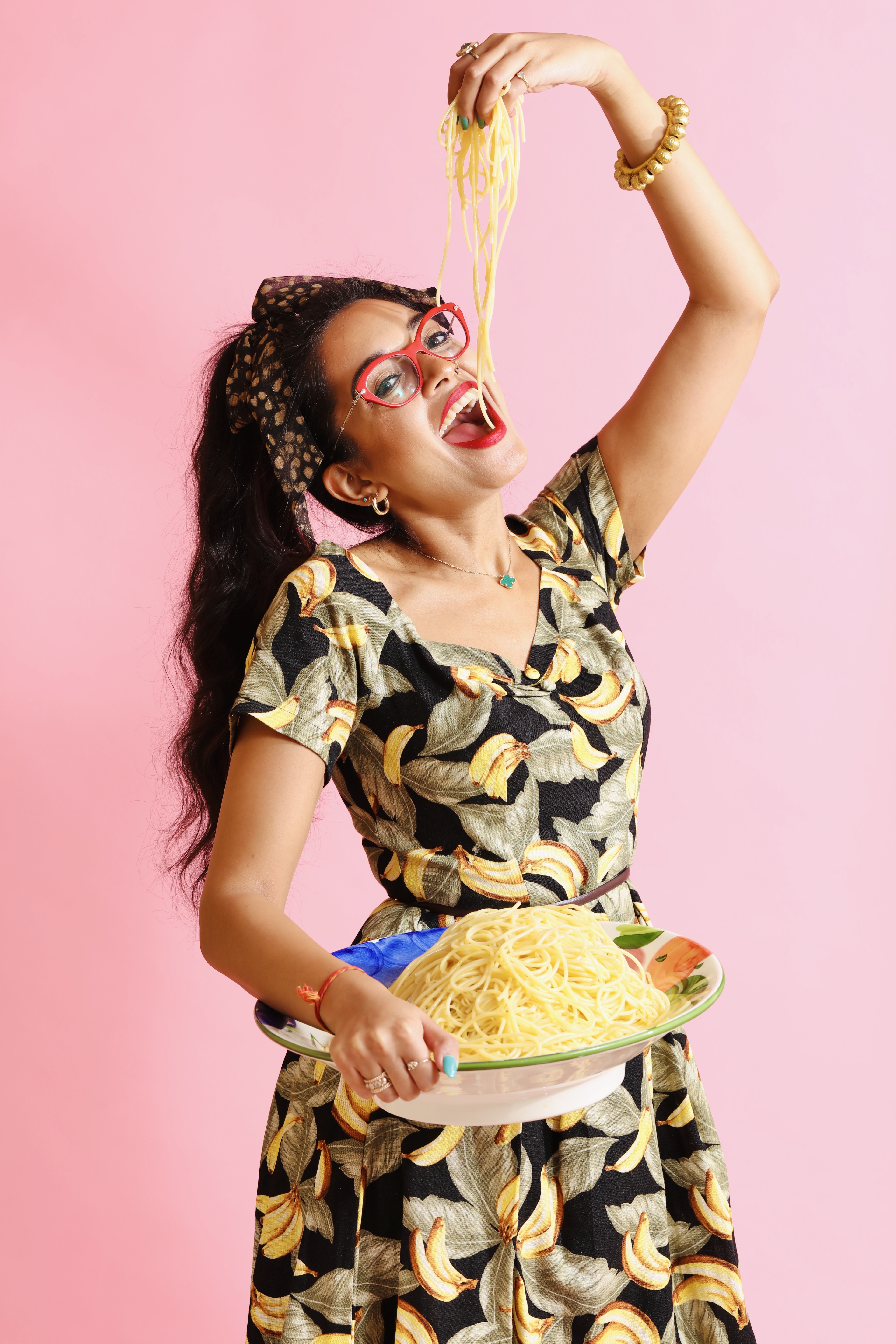
Before we get into some tips, can you run us through the cool concept behind The Modern Tiffin?
It’s a true culmination of my life. I am first generation Indian American, I’ve traveled fairly extensively to about 40 countries globally. The Modern Tiffin really brings together those two aspects of my life… The concept of a Tiffin, which is Indian, is woven through the whole book.
A Tiffin is basically a two to three, sometimes four or five layered, steel stacked portable food container, and it’s usually used to take food to lunch. The concept of that really resonated with me, because when I was younger — born and raised in NYC — my mom would pack lunches for my sister and me every day to school and we were made fun of all the time because obviously, we looked different, our food looked different, smelled different… but for me, it was very comforting. It was a way for me to stay connected to my family at home and my family in India.
So I grew up with the concept of taking lunch to school every day and even into my adult years, when I graduated college and started in the workforce, I would take lunch every single day to work because it was healthier, more economically efficient, and there weren’t very many options for me at lunch because I was vegetarian at the time, and now I’m vegan.
There is a lot of value that people can take away from actually cooking for themselves and making things portable and really bringing cooking to the forefront of your life every day.
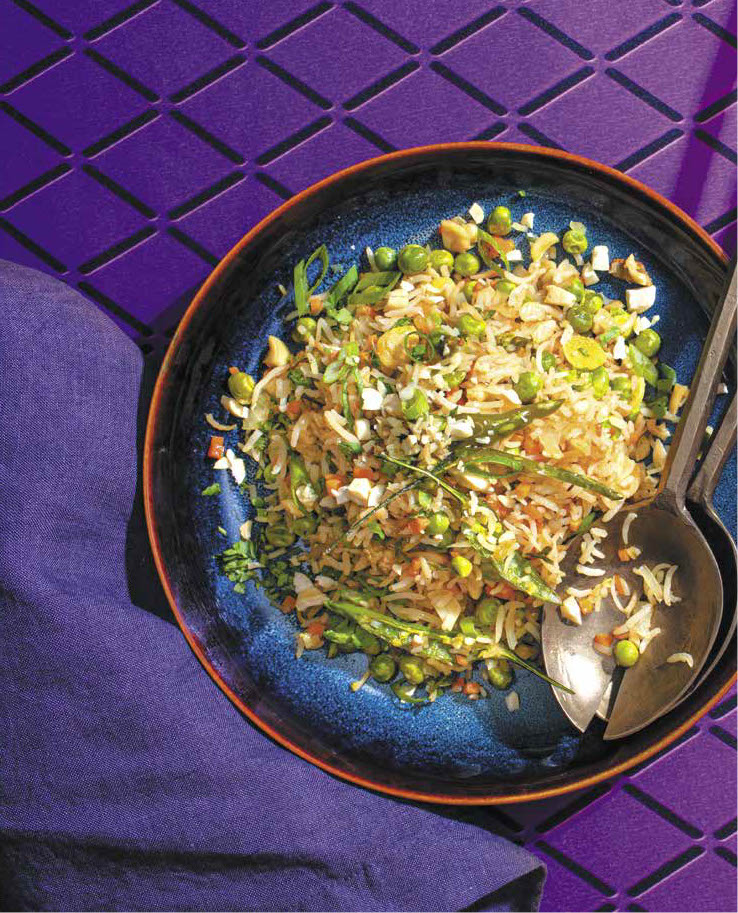
Do you have a favorite food nation? What nation are people sleeping on in terms of cuisine?
Actually, it’s Australia, which is one of the last chapters in my book. There are a few reasons it’s one of my favorites. First, a lot of ingredients are indigenous to Australia. Macadamia nuts, for instance, alot of people think they’re from Hawaii, but they’re not, they were brought over from Australia.
The variety of cuisine available is just outstanding, I think because of their proximity to Southeast Asia, they have so many types of different cuisines available, from Malaysian to Indonesian, Vietnamese, etcetera, and the quality is stellar. Much better than what you’d find in a place like New York.
The third thing is that plant based and vegan options are weaved into the lifestyle there. I’ve never walked into a restaurant and asked a waiter or waitress what the options are for vegan and vegetarians, it’s always available for me. In New York, I still can’t go to every restaurant and eat freely because the concept is still growing here. I absolutely love Australia for those aspects!
Let’s get into cooking. Building out the spice rack can be intimdating and costly but it’s essential for good food. What are your spice rack essentials? The five spices you feel people need to stock first?
I love this question because I talk about it in my book in the tips and tricks section. Dried spices are incredibly important not just for East Asian cooking but for all cooking. That is singlehandedly one of the ways that helps improve the flavor of cooking to the point that someone won’t miss meat. But my recommendation first and foremost is for people to buy whole spices, not ground spices. Whole spices contain a lot of flavor and natural oils so when you buy spices whole and grind them yourself you’re getting a lot more bang for your buck and a lot more fresh flavor versus buying already ground spices which can go rancid when they sit on a shelf for too long.
In terms of the actual spices you should have on your shelf: cumin seeds, coriander seeds, turmeric, which comes in a powder form, you can’t get that whole unless you get it fresh, dried red chilis and whole black peppercorn.
For beginners, what recipe from your book do you feel is the most accessible and easy to prepare?
Something about The Modern Tiffin, which may throw some people off, is that the list of ingredients will always seem like it’s slightly more intimidating than it is. In Indian cooking, we use a lot of different dry spices and fresh herbs — don’t be intimidated by that.
I’m going to suggest you start with Avocado and Spicy Peanut Chutney Toast. It’s avocado toast, so very basic, but the interesting part of this recipe, and why I find it very special is that a lot of people don’t realize that avocado toast is from Bondi Beach, in Australia. It was a staple in that area for a long time and then it made its way to the western world and it’s kind of taken off from there.
I’ve experienced the way they eat avocado toast but I certainly thought it could be amped up a bit with a Chef Pri twist. That’s why I’ve paired it with a spicy peanut chutney, which is Indian, from my specific area of India, which is Maharashtrian. It’s a dry peanut chutney, it has peanuts mixed with red chili, cumin, and topped with pomegranate and fresh lemon juice, and black pepper.
It’s simple, you can make the components ahead of time and you can even make the peanut chutney in bulk and keep it in your fridge to use all the time on avocado toast or anything else.
This is the perfect recipe for a beginner to start with, it’s familiar but different at the same time.
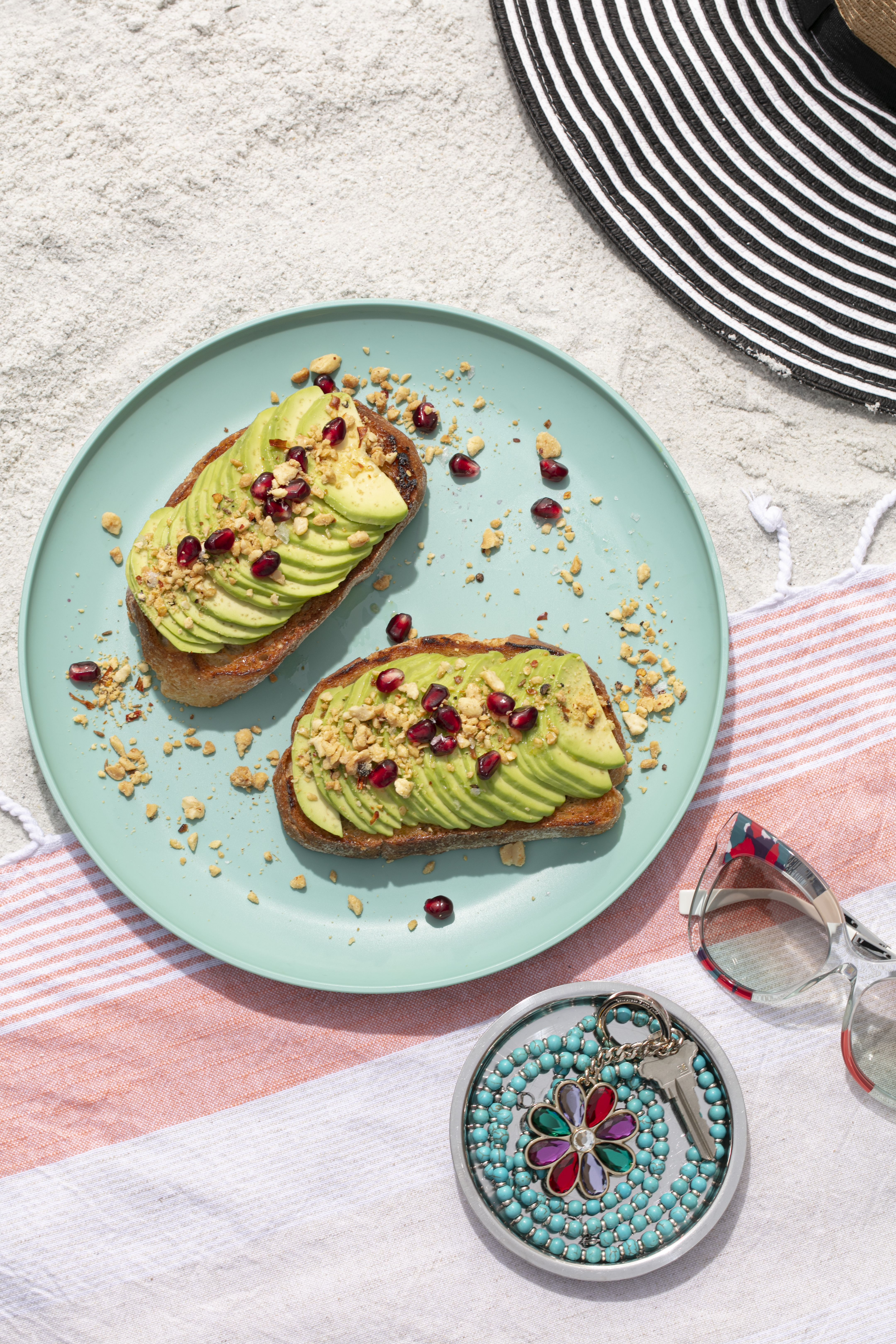
For the people who can’t seem to drop meat or give vegan and vegetarian food a real chance because they make the assumption that it’s not flavorful, how do you bring out that mouth-watering quality — those umami flavors — into meat and dairy free dishes?
Whatever food that’s being cooked, whether vegetarian or vegan, the elements of the food need to have five things between taste and texture: sweetness, saltiness, bitterness, spiciness, and that umami flavor to round it up. You can really only get that by making sure you have varying textures and flavors in your food.
When I described the avocado toast, you’ll notice the avocado on it is very buttery and can even be described as mushy because that’s the consistency of avocado. But it’s paired with dry peanut chutney, so it’s slightly crunchy, and the pomegranate on top gives some tartness and bitterness to it that balances out the butteriness and spiciness of the whole dish.
Even if you’re used to eating meat if you eat one of my dishes you won’t feel like you aren’t satisfied and need to chew on something meaty because you’re getting that full experience through texture and flavor.
Making sure you have varying textures that are complementary to each other makes a very satisfying dish. I’ve converted a lot of carnivores… I’m just saying.
What recipe would you recommend for a more seasoned pro in the kitchen?
Most of the recipes in my book are not that difficult, that’s my style of cooking because I’m secretly lazy. But a recipe that’s my favorite and I’d say it probably requires less skill but is more an acquired taste, is the Coconut Masala Stuffed Okra. Okra is my favorite vegetable and it gets a lot of hate but if you cook it properly it’s not slimy. This dish takes fresh okra and is split lengthwise and stuffed with a Coconut Masala mixture that’s made with grated coconut, and a bunch of different dried spices ground up and stuffed into the okra and flash fried.
Topped with a lot of fresh lemon juice and fresh coriander or cilantro. It’s a different take on okra but it’s something I grew up eating a lot. That’s a recipe someone would enjoy making if they are more adventourous eater.
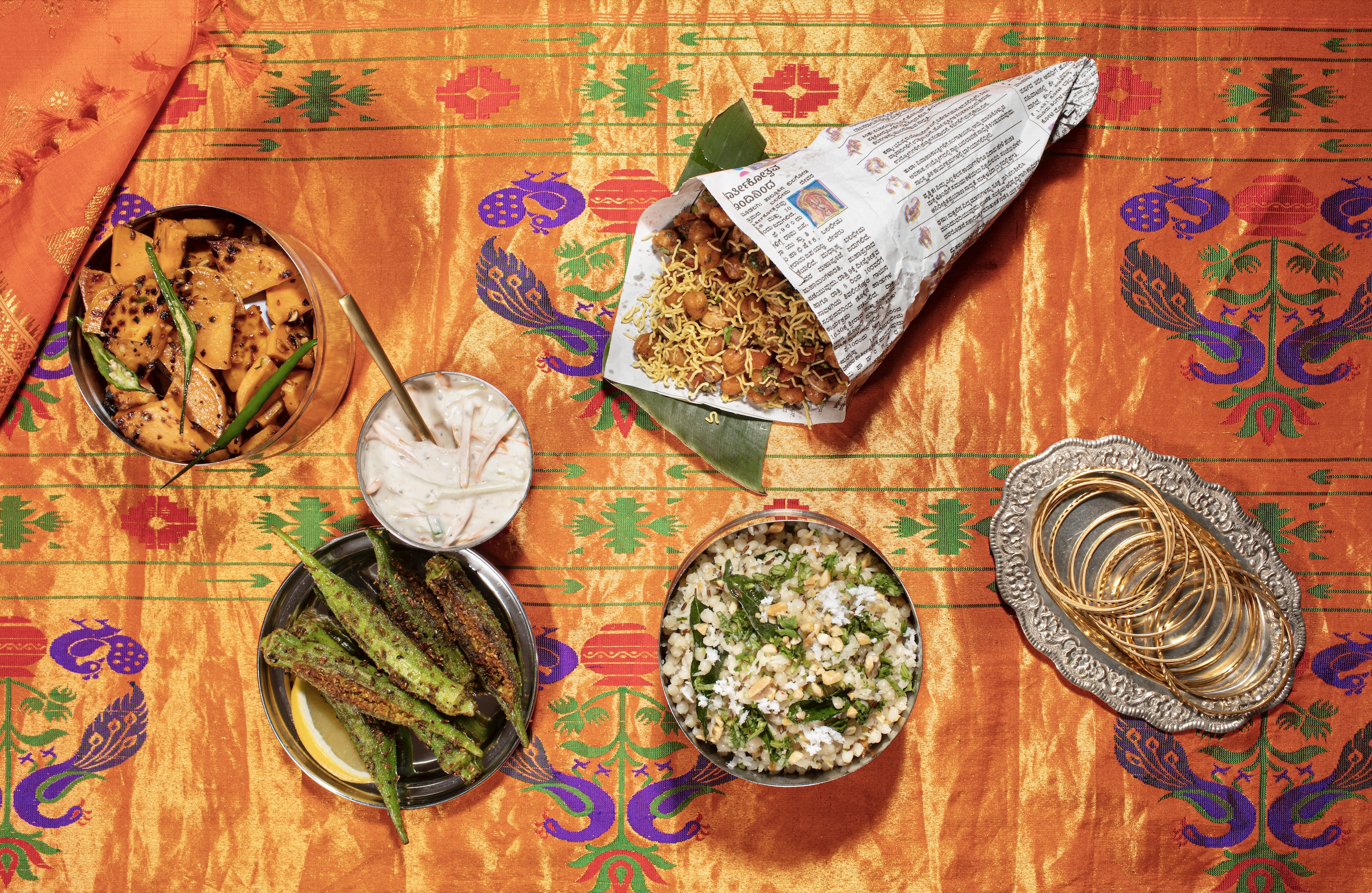
Can you run us through a dish that’s your go-to for convincing meat eaters to give veganism or vegetarian dishes a chance?
I have two in my book, one that I think is really fun and one I think is more familiar.
The fun one is in my South Indian chapter. The dish is Spiced Rub Cauliflower Steak with Pistachio and Cilantro Gremolata. We’ve all heard of cauliflower steak, very common, but the way this is cooked and how it all comes together is a little unique.
I have a huge focus on sustainability so a lot of recipes in my book are low waste or zero waste. With the cauliflower, I’ve not only used the head of the cauliflower but the leaves as well, instead of just discarding them. The leaves get charred and cooked with the cauliflower which adds a really nice textural element to the meatiness of the cauliflower.
That kind of helps bring it together with the greenness of the leaves then it’s topped with a pistachio gremolata that has a lot of fresh tomato, coconut, pistachio, and crushed coriander. It adds that tangy and fresh element that helps round out the dish. I’ve made a rendition of this for a lot of my meat-eating friends and if I pair it with a cumin basmati pulao they are basically in heaven.
I’m not just saying that, they’ve said that to me!
The second dish is a Tamarind Tofu Bánh Mi. I haven’t been to Vietnam yet, it’s on my list, but I’ve had a lot of bánh mis in my life. This Bánh Mi takes into account a lot of familiar Indian elements and it marinates the tofu in tamarind chutney and pairs it with a really spicy vegan aioli with a nice toasted bread and all of the accouterments of the fresh jalapeños and cilantro, carrots and relish.
I’ve had a few of my friends test this recipe while I was developing the book, all of them were heavy meat eaters, I intentionally gave them this recipe to test, and they told me they did it with both chicken and tofu and they much preferred the tofu because the texture and flavor was so much better than the chicken because the tofu was able to absorb the marinade better.
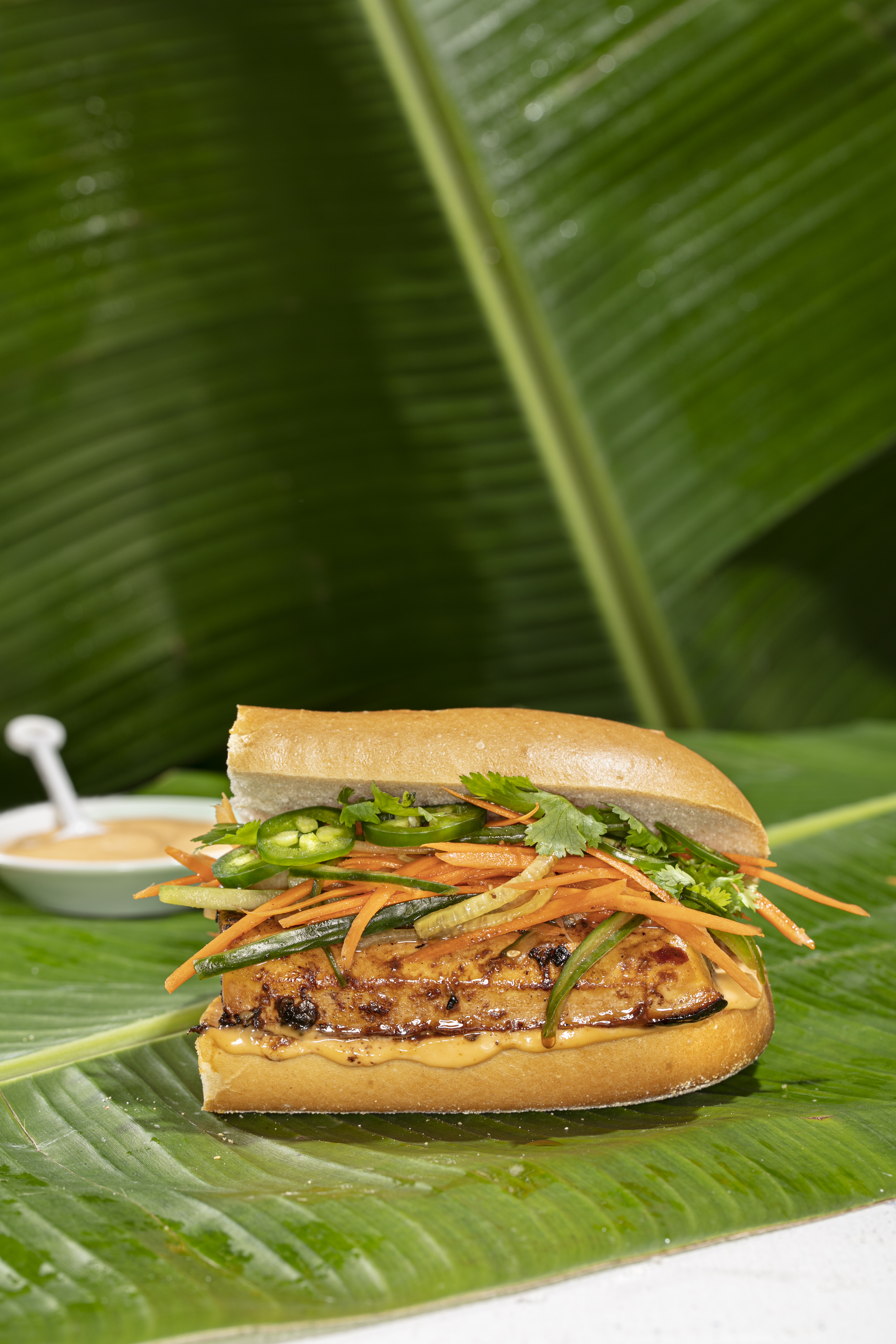
I wanted to get your take on why its important to incorporate more vegan and vegetarian food into your diet, even if you don’t plan on giving up meat entirely?
My mission around this, I’m not telling people “go vegan or I won’t like you” — it’s not like that, but it’s about making more conscious decisions about what you put on your plate. In America, the perspective on food is that it’s a three-pronged plate. A protein at the center, a carb on the side, and a vegetable on the side. They’re both afterthoughts, the protein is the star of the plate. That’s not the way the rest of the world eats, especially not the culture I come from.
My hope is that I can get people to think outside of that plate and broaden their perspective and involve vegan and plant-based foods into their life more. One because it’s easy, two because it’s not as expensive as people think, and three because it’s really satisfying and it directly impacts the longevity of our planet.
All the recipes in my book all involve ingredients and foods we’ve heard of. There is nothing in this book that isn’t going to be accessible to someone who lives in the middle of America and doesn’t have access to a fancy market like Whole Foods.
I want people to realize that you can be really healthy and make really delicious food and help the planet at the same time.







